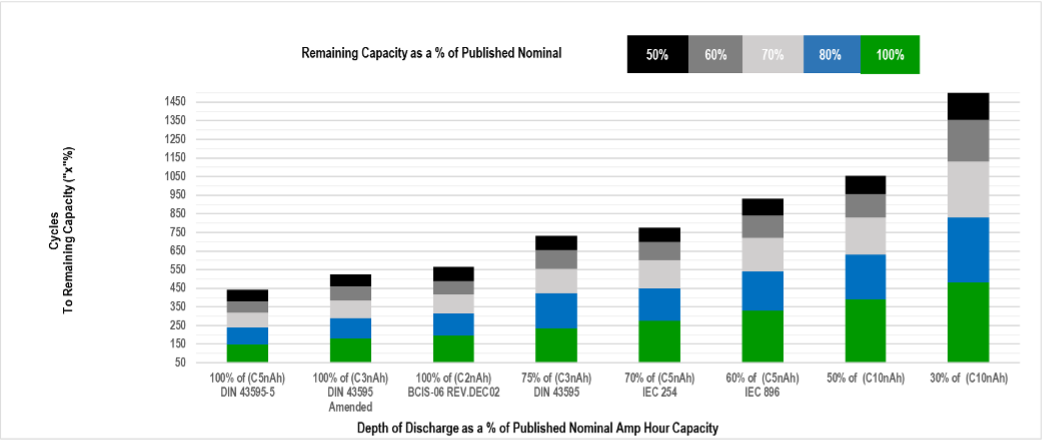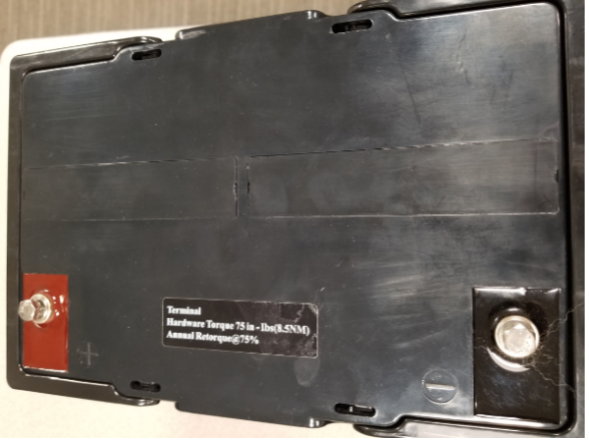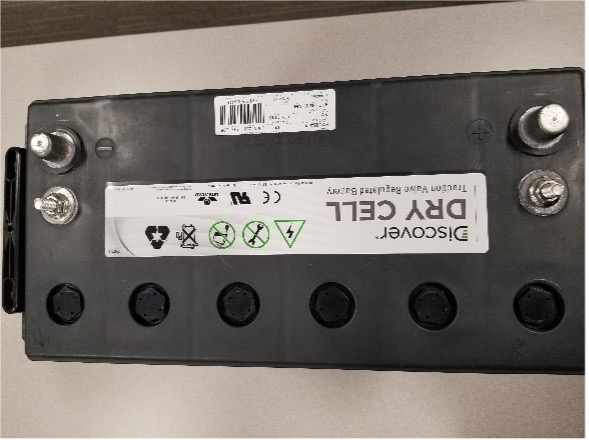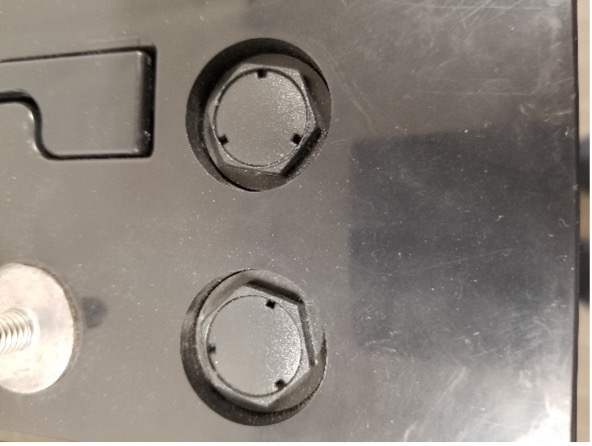The capacity of your single battery cannot be increased from its original capacity. However, strings of batteries can be connected in series to increase voltage or parallel to increase capacity.
Yes. Discover VRLA DRY CELL batteries are approved for air transport by the F.A.A., I.A.T.A. and the
D.O.T. This information is stated on a label located on the battery.
Determining if a battery has reached the end of its useful life can be a difficult task. Depending upon what test standard you wish to use or what application the battery is being used in, there are several answers to this question.
There are as many industry test standards as different types of batteries and applications.
No matter what test standard is used, if the battery no longer provides the level of service you need to do the job it was initially purchased to do, then as far as your application is concerned, the battery is at the end of its useful life.
That does not mean the battery is at the end of its useful life according to the manufacturer or the industry engineering standard.

Figure 6 – Cycle Life Testing Standards at various Rates and to various remaining capacities
According to BCI Standard BCIS-06, a deep-cycle battery would be considered to be at the end of its life when it was not able to deliver 50% of its original rated capacity when tested at its 2-hour rated capacity while maintaining a voltage above 1.75 volts per cell. (5.25 Volts for a 6-volt battery – 10.5 volts for a 12-volt battery).
- A golf cart battery used in golf carts would be determined to be at its end of life when it was not able to maintain at least 1.75 volts per cell (5.25 Volts) for 40 minutes under a 75-amp load.
- Most official tests to determine the cycle life of a battery are performed in laboratories under controlled circumstances and temperatures.
A quick non-scientific RULE of THUMB test that the average user can perform:
- Ensure the battery has been fully charged to approximately 2.13 volts per cell. (6.4V for a 6-volt battery and 12.8V for a 12-volt battery)
- At or near room temperature (20°C/68°F), apply a load using a carbon pile (preferable) or resistive load tester capable of applying a meaningful load of 3 to 4 times the battery AH capacity or two times the reserve capacity rating.
- If the battery maintains a voltage over 9.6 volts for 30 seconds, it is still usable. It may not, however, be capable of supporting the runtime you need.
NO… batteries used in colder or moderate conditions can last between 2 to 3 times longer than batteries used in hot climates or high heat conditions.
In the northern U.S. states, in Canada or in Northern Europe, the life expectancy of an automotive battery average between 48 and 54 months. In more Southern Climates like the state of Florida in the USA, the average life expectancy of standard automotive batteries is about 18 to 23 months. This data is based on typical usage and very good charge and discharge conditions.
Heat kills batteries!
For every 10° increase in temperature above 77°F /25°C, the chemical reaction inside your battery will approximately double, cutting battery life in half. **
**Arrhenius’ Law
Recharging a flooded lead-acid battery normally produces hydrogen and oxygen gases. Spark/flame retarding vent caps can help prevent explosions in flooded battery types.
All quality AGM and GEL batteries use valves with built-in flame arrestors. IF IT IS NOT OBVIOUS that the flame arrestors exist, do not buy the AGM or GEL battery. It is easy to see the flame arrestor valves installed in each cell.



Explosions typically occur when jumping, connecting or disconnecting battery chargers or battery cables, and under load or while starting an engine.
While not fatal, battery explosions cause thousands of burns and eye injuries yearly. Below is the usual sequence of events when battery explosions occur with a flooded battery in a starting application:
- One or more cells had a concentration of hydrogen gas above 4.1% because the vent cap was plugged or a defective valve did not release the gas. An explosion requires a concentration of hydrogen above 4.1%!
- The electrolyte levels fell below the top of the plates due to high under-hood temperatures, overcharging, or poor maintenance resulting in excessive gassing.
- A low resistive bridge or “treeing” formed between the top of the plates such that when the current started to flow, it caused an arc or spark in one of the cells above the electrolyte level.
- A combination of the above events ignites the gas, blows the battery case cover off and spatters electrolyte all over the engine compartment.
The largest number of battery explosions while starting an engine occurs in hot climates. When an explosion happens, thoroughly rinse the engine compartment with water, and then wash it with a solution of one pound (.5Kg) of baking soda to one gallon (4L) of warm water to neutralize the residual battery acid. Then thoroughly rewash the engine compartment with water.
Using Discover AGM or GEL batteries can significantly reduce the possibility of battery explosions.
